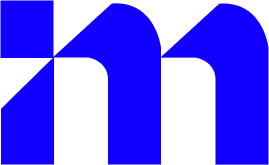Lead Magnets, Not Magic: The Email Trick Even Experts Miss
Most marketers think their email list is broken. It’s not, their lead magnet is.
They tweak subject lines, rewrite welcome sequences, and test every CTA button color under the sun. But none of it matters if the wrong people are signing up, or worse, if no one’s signing up at all. The real problem isn’t the automation or the copy. It’s the magnet pulling people in.
In the rush to “build the list,” most experts default to generic freebies: a tired checklist, a bloated eBook, a recycled PDF. But today’s audience is more selective than ever. They don’t just want information, they want immediate value, delivered with precision.
In this article, we’ll break down the overlooked power of high-conversion lead magnets, why most underperform (even when they look great), and the subtle, counterintuitive trick that separates savvy marketers from the truly elite.
Why Email Is Still King
Despite the rise of social media algorithms, AI chatbots, and influencer-driven content, email remains the undisputed heavyweight in digital marketing. It’s not just a legacy channel, it’s the most profitable one. According to Litmus (2024), email marketing delivers an average ROI of $36–$42 for every $1 spent, making it a smarter investment than almost any ad platform or SEO strategy.
What’s more, email gets attention where other channels fight to be seen. Welcome emails boast an average open rate of 82% (GetResponse), a figure that dwarfs most Instagram reach or Facebook clickthrough rates. Unlike a fleeting TikTok or a disappearing Story, email lands directly in someone’s inbox, a space they’ve chosen to give you access to.
But here’s the catch: email only works if the right people are subscribing. A list full of disengaged freebie-hunters or mismatched leads won’t convert, no matter how good your automation or storytelling is. That’s why what brings people onto your list, your lead magnet, matters even more than what happens after. Before optimizing your funnel, fix the front door. Because email isn’t dying, it’s just getting pickier about who it rewards.
The Problem with “Free PDF” Lead Magnets
At one point, “Download our free PDF” sounded like a smart, generous offer. But today, it’s digital wallpaper, everywhere and ignored. Users have been burned too many times by bloated “ultimate guides” that overpromise and underdeliver. When every brand offers a generic 15-page eBook, its perceived value drops to near zero.
- A digital agency’s well-designed guide saw only 1.9% CTR and <3% conversion — effort doesn’t equal results.
- Most PDF lead magnets fail because they’re too broad or too informational, not outcome-driven.
- Audiences prefer specific, actionable tools that deliver fast results over lengthy guides they have to sift through.
Joanna Wiebe, founder of Copyhackers, nailed it:
“People don’t want eBooks. They want answers.”
This shift in user behavior means traditional “downloadables” aren’t enough. If your lead magnet feels like homework, your audience will bounce. If it promises a result, even if tiny, but fast, they’ll convert.
In today’s crowded funnel, the winners are not the ones who say “Here’s a PDF,” but those who say, “Here’s how you get this result in this time frame.”
The Email Trick Experts Miss: The “Quick Win Magnet”
Most marketers chase complexity, long eBooks, 20-page guides, or hour-long webinars, thinking more content equals more value. But the real conversion secret isn’t more information. It’s faster transformation.
Enter the Quick Win Magnet: a lead magnet designed to deliver a tangible result in 5 minutes or less.
This could be:
- A ROI calculator that shows how much your ad spend should actually return
- A 3-sentence cold email template that books meetings today
- A set of Canva mockup templates you can plug and play for your next pitch
These aren’t just freebies, they’re fast results. And that’s why they work. According to Cialdini’s reciprocity principle, when someone receives immediate value, they feel a psychological urge to reciprocate, usually by trusting your brand more or saying “yes” to your next ask. Pair this with micro-commitment theory (small actions leading to bigger ones), and a Quick Win becomes the first domino in your conversion funnel.
Case in point: A SaaS productivity tool replaced their generic “Ultimate Productivity eBook” with a simple interactive time-blocking calculator. Result? 5x more leads, 30% more trial signups, and users who felt instantly empowered by the product’s value, before even trying it.
The trick isn’t giving away more. It’s giving away just enough to create a win. The faster you deliver a result, the more trust you earn, and the better your email list performs.
If your lead magnet takes more than 5 minutes to use, it’s not broken, it’s just too slow.
The Psychology Behind Quick Win Magnets
The best lead magnets don’t just inform, they resolve. That’s because people are hardwired to crave fast answers. Psychologists call it cognitive closure: the brain’s desire to escape uncertainty as quickly as possible. It’s why a simple “Do this now” checklist often beats a beautifully designed 50-page guide.
When users download a lengthy PDF, there’s no immediate payoff, just more to read, more to do, more to delay. But a 2-minute tool that solves a specific problem? That triggers a dopamine loop. The user takes action, sees a result, and gets rewarded, instantly. That feeling of resolution is addictive.
There’s also the power of commitment bias. When someone completes a quick task and gets a win, they feel progress. That small sense of success makes them more likely to stay engaged, whether it’s opening your next email or signing up for your product trial. It’s momentum, and momentum converts.
The data backs this up: Lead magnets that offer instant feedback, like quizzes, scorecards, or graders, see 3x higher engagement than static PDFs (Source: LeadQuizzes, 2024).
Bottom line: If your lead magnet gives users something to do, not just something to read, it’s far more likely to capture attention, and keep it.
Lead Magnet Positioning: The Forgotten Variable
Even the best lead magnet can flop if it’s poorly positioned. It’s not just what you’re offering, it’s how you frame it.
Too many marketers lead with bland, vague language:
“Download our brand guide.”
That sounds like homework.
Now try:
“In 2 clicks, fix the #1 mistake hurting your brand trust.”
Same asset, entirely different perception. One feels passive; the other promises an urgent, valuable outcome.
Positioning is the bridge between your lead magnet and your audience’s motivation. The goal isn’t just to describe the resource, it’s to sell the result it delivers. That’s where outcome-driven language, specificity, and urgency come in.
Use this simple framework to craft high-converting magnet headlines:
“In [X minutes], you’ll get [Y result] without [Z pain].”
Examples:
- “In 3 minutes, write a cold email that gets replies, without sounding salesy.”
- “In 1 click, design a pitch deck that lands meetings, no graphic skills needed.”
- “In 5 minutes, calculate your true ROI, without spreadsheets or math.”
This shift might seem subtle, but it’s powerful. It transforms your lead magnet from “just another download” into an irresistible, must-click asset.
Because people don’t want content, they want outcomes. And they want them fast.
Opt-In Placement and Delivery Mistakes
Even the best lead magnet will flop if it’s hard to find or poorly delivered. One of the most common mistakes? Burying the opt-in form at the bottom of a blog post, where only a fraction of readers ever scroll. Another misstep: using a bland, one-size-fits-all form without a dedicated landing page. It doesn’t explain why the magnet matters or what users will get out of it.
And once someone does sign up? Silence. No welcome email. No follow-up. No next step. That’s a wasted opportunity to build momentum.
Here’s how to fix it:
- Create a dedicated landing page with focused, benefit-driven copy that’s specific to your lead magnet.
- Use a mobile-optimized, sticky CTA (call-to-action) that follows the user as they scroll, especially on long-form content.
- Send the lead magnet instantly, but don’t stop there. Include a short welcome email that previews what’s coming next and invites the user to engage further.
Getting the magnet in front of people, and delivering it strategically, is just as important as the magnet itself. Visibility + velocity = conversions.
Real-World Examples That Nailed It
Sometimes, the best way to understand the power of a high-converting lead magnet is to see it in action. These real-world shifts in strategy show how small tweaks, not in content, but in delivery and positioning, led to massive jumps in opt-ins and conversions.
Example 1: Copywriting Coach
Before: A generic “Free Copywriting Guide” offered little specificity or outcome. It converted modestly at a 4.2% opt-in rate, mostly attracting freebie seekers.
After: The coach replaced it with a laser-focused, outcome-driven magnet:
“3-Sentence Cold Email Template That Books $5K Clients”
This tapped into a precise pain point (getting high-value clients) and promised a fast, actionable solution. Result? A jump to 17.4% opt-in rate, over 4x more leads from the same traffic.
Example 2: DTC Skincare Brand
Before: Like many DTC brands, they offered a 10% off coupon as their default lead magnet. It worked, but signups plateaued.
After: They reframed the entry point as an experience:
“Take This 30-Second Quiz & Get a Custom Skin Plan”
By promising personalization and quick interaction, they created a sense of ownership and curiosity. The quiz funnel 2.5x’d email signups, and led to higher post-signup engagement with tailored product recommendations.
Example 3: B2B Analytics Firm
Rather than offer a whitepaper or long report, this firm launched a “Client ROI Calculator” as their lead magnet. It let prospects enter a few metrics and see real-time, personalized results on what they could gain using the platform.
This Quick Win Magnet not only captured more qualified leads but also shortened their sales cycle by 22%, as prospects arrived already educated and convinced of the value.
8. Bonus: How to Brainstorm a “Quick Win” for Any Niche (150–200 words)
If you want a lead magnet that converts, start by asking:
“What is a tiny result I can help my ideal customer achieve in 5 minutes?”
That one question can unlock high-converting ideas for any niche.
The key is to focus on speed and specificity, a small win that feels valuable and actionable right away. Forget grand promises. Instead, give users a micro-transformation they can feel within minutes.
Here are some plug-and-play examples:
- Fitness: “Build your custom 3-exercise morning warm-up”
- Finance: “Find $200 in hidden savings in 10 minutes”
- Writing: “Generate a high-converting headline using this AI prompt”
- Marketing: “Score your homepage in under 3 minutes with this checklist”
- Career Coaching: “Fix the 3 weakest lines in your resume (in 5 mins)”
You don’t need fancy software, just tools like Tally, Typeform, Canva, or Google Sheets to deliver the experience fast and clean.
Remember: A good lead magnet teaches. A great one delivers a win, immediately.
Conclusion: Email Isn’t Dead, Your Lead Magnet Is
The problem with most email strategies isn’t the email, it’s the entry point. It’s not about how many people you can get on your list. It’s about who joins, why they join, and what value they get the moment they do.
That’s where Quick Win Lead Magnets shine. They deliver instant, tangible results. They build trust before the first email even lands. And they lead to more signups, more engagement, and better long-term retention.
So stop asking people to “join your newsletter” or “download your guide.” Instead, offer them a clear win, something they can use right now to solve a real problem.
Because in today’s inbox-overloaded world, the only lists that thrive are the ones built on immediate value, not vague promises. Give before you ask. Win before you welcome. That’s the trick.




